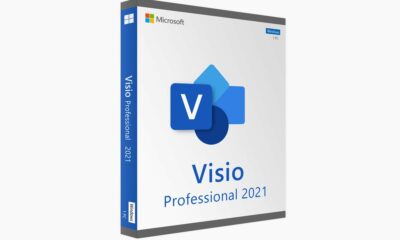MARKETING
How to Improve IOS Push Notifications Conversion Rates

IOS push notifications are a very good means if you are looking forward to keeping your surfers busy and are focusing on delivering value to your users while they are not using the application.
Therefore, the apps can use Push notifications to deliver your message.
- Get updates on various events like sports, news, etc.
- Weather reports on forecasts.
- Arrival, departure, check-in, and check-out details of flights.
For the ones who publish on apps, IOS push notifications are very fruitful because with them we can communicate directly with the users. A beautiful understanding and bonding can develop with the users through personal messaging. These notifications surely guide and remind the users to use the app, whether at present they are on the app or not. With these notifications, you can:
- Improve the experience of your customers.
- You can convert unknown users into known ones.
- Your products can be promoted.
The users must opt to receive the IOS Push Notifications, which is very rare that they accept to have the notifications. This problem used to be there with the IOS users as with the android users it was automatic that they received notifications whereas the recent users of android now have the users with opt-in for receiving the push notifications. If a user chooses don’t allow, the notifications cannot reach him and if a user denies having these notifications, then it gets more difficult for them to see them as they might not be interested to go to their settings to opt-in for push notifications again.
How can an App Publisher increase the push notification opt-in Conversions?
It is really very easy to get the conversion rate increased for Push opt-in by sending them a push pre-permission, which is an in-app pop-up sort of message that explains why it is important for a user to have push notifications.
You can now deliver targeted push pre permissions to increase your business profits by these in-app messages so that you can maximize the chance of opt-in to get push notifications to the users.
This is surely going to help you in:
- Sending push notifications at the correct timing
- Send the message so that the users can see it time and react as you want.
- Guiding the users that push notifications do benefit.
- Getting to know the timing of your message and content for better results.
Is there any wrong timing in asking the Push Notifications?
Well, timing plays a crucial role in convincing the users to have your push notifications as when a user installs an app and sees your push notifications, he is likely to get irritated because he has yet not experienced the app and the notifications won’t be liked by him. This I feel is the wrong timing. Users are convinced to accept the push notification invite through notifications, e-mail, or messages, but timing plays a major role in that. Therefore, asking for permission for notification at the wrong time will surely lead to the uninstallation of the app by the user.
The right time for push notification.
The best and ideal time to ask for permission for push notification is when you find that the user is frequently using the app and having a positive attitude towards it. This will enable him to notice the push notification invite nicely, and he will accept it. The text for pre-permission won’t be needed in this case. The user will understand the use of push notification, and thus he will accept it and value you.
Let’s elaborate it with the help of examples:
1. Travel Apps: For the travel apps, I would tell them to send their pre permission once the user has booked his first trip. Like you can push notifications regarding alerts for your flight.
2. Retail Apps: The retail apps can send their pre permission while the user has made his first buy. The notification can be related to get tracking updates.
3. Media apps may include pre permission relating to new recommendations for the playlists after their one playlist is created.
How impactful is this going to prove?
A businessman can with the least effort test the impact that has been laid by the push pre-permission. This is surely going to benefit you in knowing how successful your pre permissions have proved to be after the IOS push notifications have been accepted by the users.
A/B testing is a term that is very commonly being used for experiment control to find the better option from two available options for fulfilling your objective. Variant A which is control and variant B which is treatment can be compared with each other for getting out better outcomes of interest.
Seeing your target audience, you can create multiple push pre permission messages that can be sent at a different level for different users. A/B test works for the group that has not received the text. Using this method, you can get to know which approach gave you better success and which one carried default.
Source link



















You must be logged in to post a comment Login